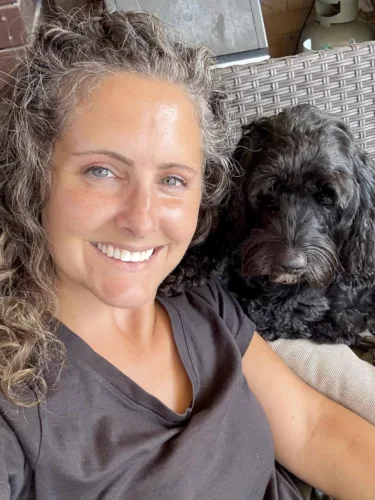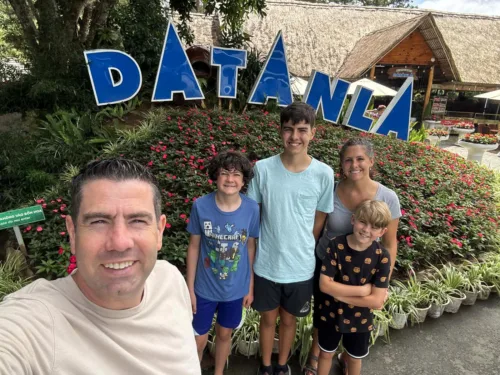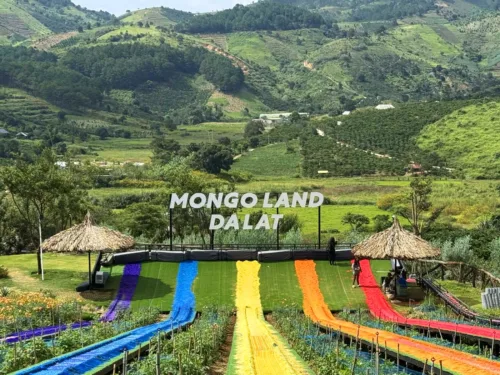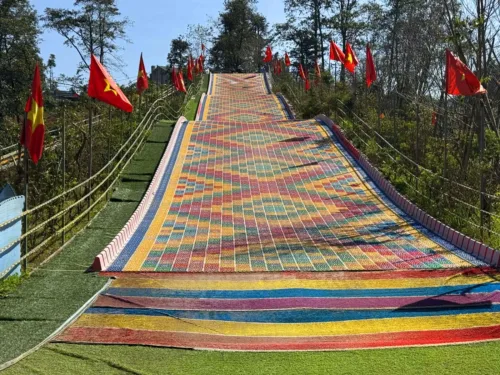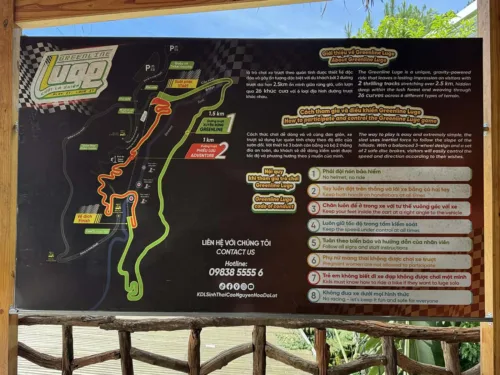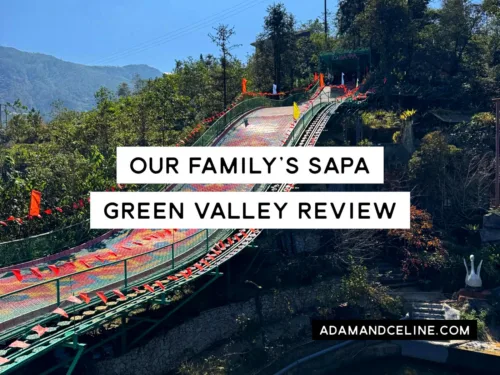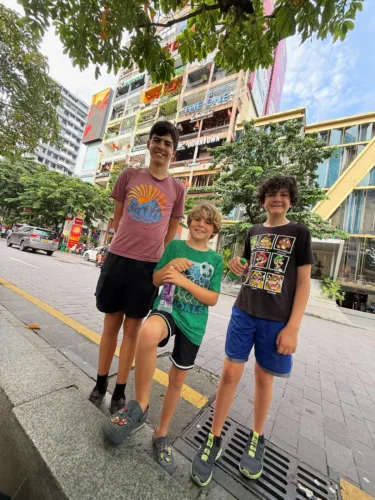Driving in Baja can be equally exciting and intimidating. Usually, it’s exciting for the passengers and intimidating for the driver (that’s me!) Baja California highways and manageable as long as you know what to expect and can make for an epic road trip through the peninsula states of Baja California and Baja California Sur.
We tow our 30-foot travel trailer with our Dodge Ram 2500 when we visit Baja. Let’s just say it’s not a small vehicle to navigate Baja Mexico roads.
The Baja peninsula is known for amazing scenery, sandy beach, camping, and great food, but before you actually drive the roads, you may not realize that driving in Baja involves narrow roads with no shoulder, windy gusts, potholes big enough to lay down in, cliffs with no (or previously used) guard rails, and free-range animals without fencing to stop them from wandering onto the highway.
This is a stretch of highway where the speed limit is 80km/hr (about 50mph). Thankfully in this section there was some shoulder to give us some space on our width, and we know enough that going around a corner might bring us to a section of highway like this, so we go slow until we’re sure about what’s coming.
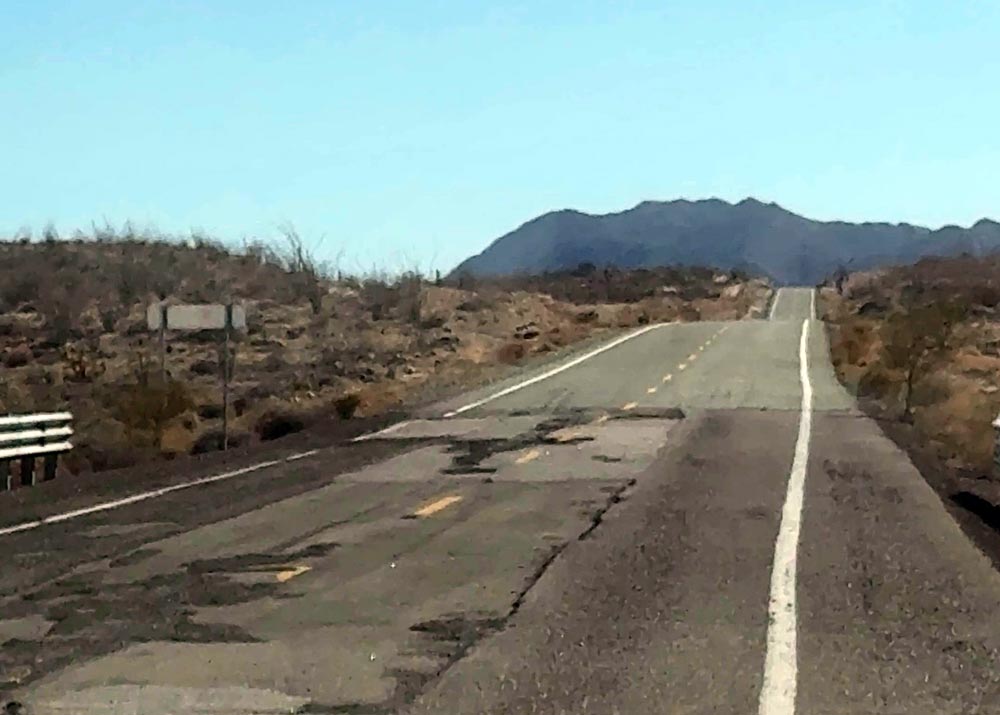
Watch for potholes and partial lanes when driving in Baja
In Baja California (the state that’s the north half of the peninsula) there are 2 main highways (HWY 5 from Mexicali along the sea of Cortez and HWY 1 from Tijuana along the Pacific Ocean) that join part way down.
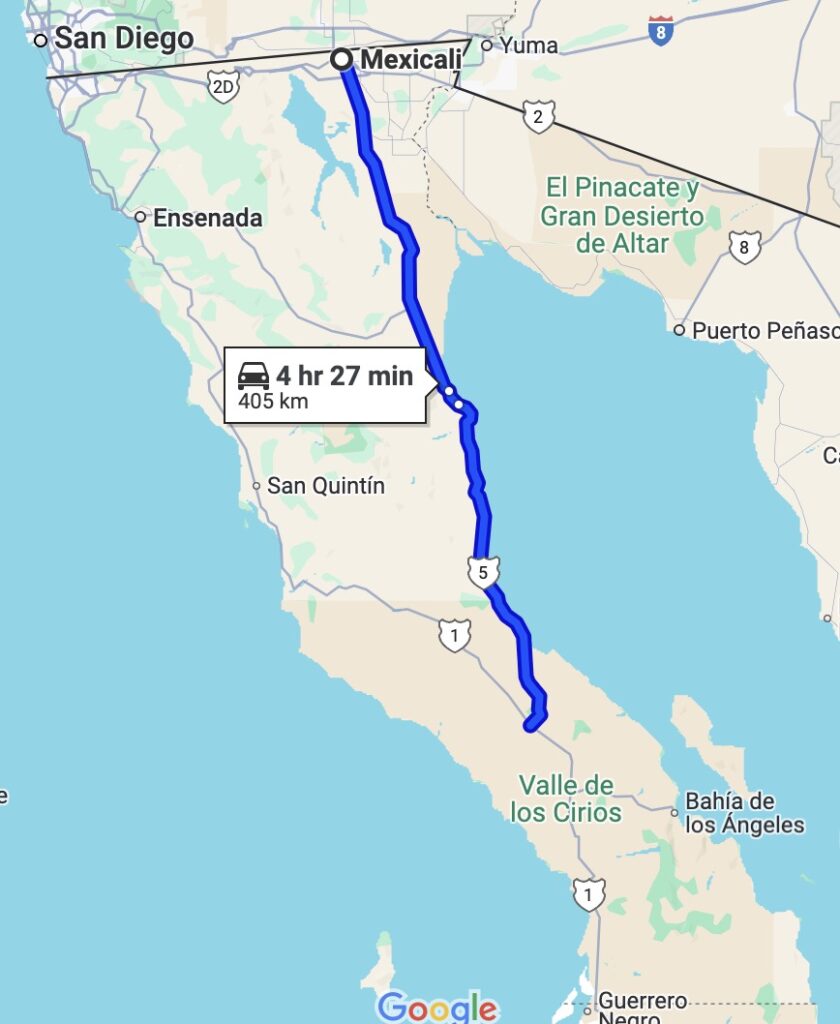
Hwy 5runs from Mexicali to Chapala where it meets hwy 1
On Hwy 1, you’ll be coming from Tijuana or Tecate border, going through Ensenada, then crossing the peninsula at El Rosario, or taking HWY 3 from Ensenada to San Felipe.

Hwy 1 runs from Tijuana to Chapala where it meets with Hwy 5
Where they meet, HWY 1 continues crossing back and forth across the peninsula and then for the southern half of the peninsula (the state of Baja California Sur – nicknamed “Sur”) there’s a single 2-lane highway for the entire length of the peninsula with no shoulder that is the main transportation route for buses, transport trucks, locals, and tourism.
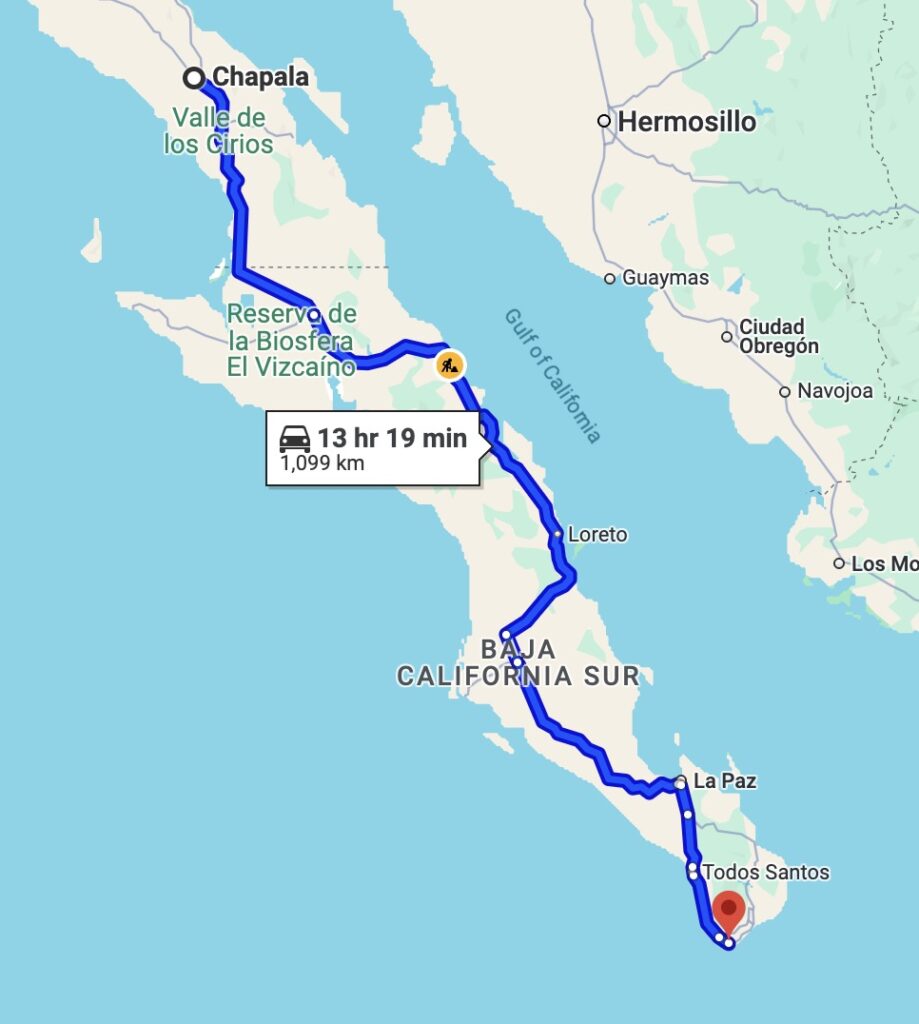
Highway 1 is the primary highway in Baja Mexico
Let me be redundantly clear: 1 highway that is 2-lanes North to South.
There are no alternate routes if a truck ends up in a ditch (like on our current trip) and can’t be moved while blocking one of the lanes. There are no detour routes for flooding, or transportation routes for transport trucks and passenger routes for locals and tourists.
All that to say, it really is worth the effort to take your RV to Baja or plan a road trip to Los Cabo. We took our RV to Cerritos beach (about an hour north of Cabo) and enjoyed a campground there. While there, we went pet sitting in Cabo San Lucas to care for an energetic dog, experience the city, and enjoy some of the luxuries we don’t get in our RV (like long showers, a dishwasher, and a full-sized kitchen).
Here’s how we found pet sitting in Cabo San Lucas.
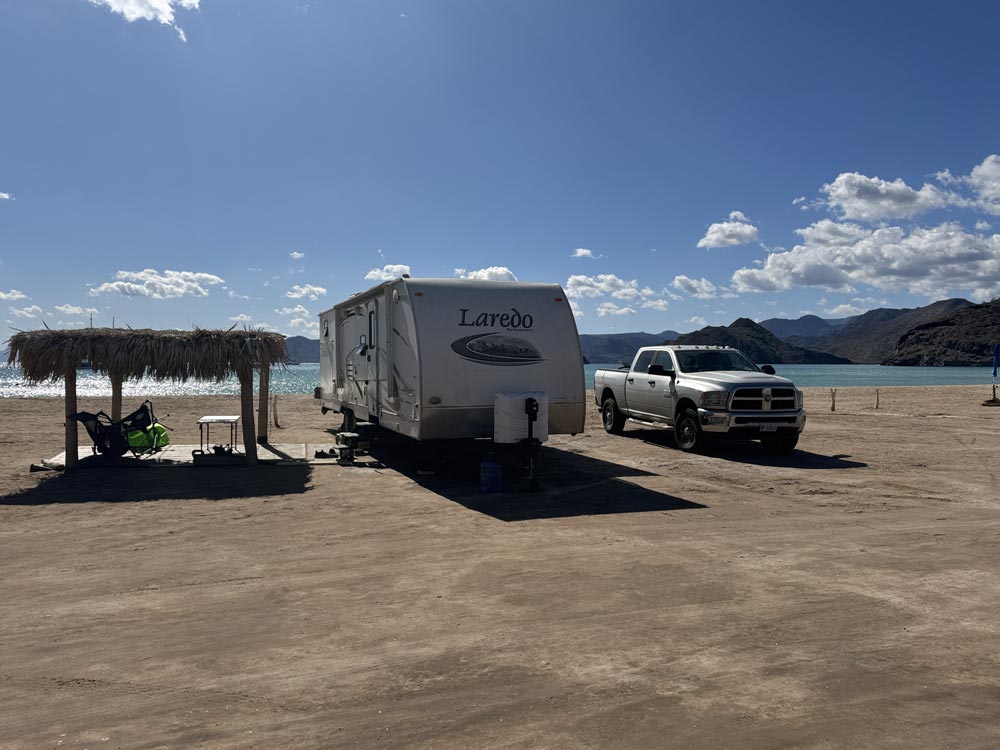
Prepare your checklist for plenty of beach camping
Tips for your Road trip in Baja California and Baja California Sur:
Choosing your Mexico border crossing
If you want to be on the east side right away on the Sea of Cortez, then choose a crossing like Mexicali from California, or Los Algodones from Arizona.
We’ve chosen both times to cross at Mexicali / Calexico and make San Felipe our first stop. Friends crossing at Los Algodones in Yuma chose to stop at Puerto Penasco (Rocky Point) before making their way to San Felipe, and other friends chose to cross in Tecate and stop in Ensenada before crossing to San Felipe.
We’ve been told that Tecate is preferable to crossing in Tijuana if you come from the San Diego area, and if you’re somewhere East of the California coast, then make the trip to Mexicali.
If you ask people, you’ll find people who have had no issues at any of those crossings and some who have had complications at every one of those. We’ve crossed twice in our RV and haven’t had complications either time coming or going.
Requirements for crossing the Mexico border
These requirements change from time to time, so it’s always a good idea to review the US government’s website here for requirements for crossing by land into Mexico. They can be different for the Baja peninsula compared to mainland Mexico.
There are different requirements if you’re going for less than 7 days, but assuming you’re taking a road trip that will last more than a week:
- Vehicle registration and ownership
- RV ownership and registration
- Release for international travel from your vehicle’s leaseholder
- Mexican Auto Insurance (don’t assume your current car insurance includes Mexican coverage – most don’t)
- Passport for everyone traveling
- FMM Paperwork – (also called the multiple immigration form) you can fill out the paperwork in-person at the border which is what we’ve done each time. You’ll need to show this when you leave to prove you haven’t overstayed. The cost of your FMM is about $35 USD/person. The paperwork takes less than 5 minutes.
What you cannot take across to Mexico at the Border Crossing
- Fresh fruit, vegetables, and meat
- Firearms
- Fireworks
- Gasoline or Diesel (outside of what’s in your vehicle’s tank)
- More than the equivalent of $10,000 USD
- Tobacco, alcohol, non-prescription drugs
How long does it take to drive Baja, Mexico?
San Diego to Cabo San Lucas is a 1055-mile journey. Google Maps suggests that it would take 20 hours (An average of about 50 mph).
From our experience, expect to drive much slower than the speed limit considering Baja road conditions, winding roads, pot holes, and driving through towns along the way.
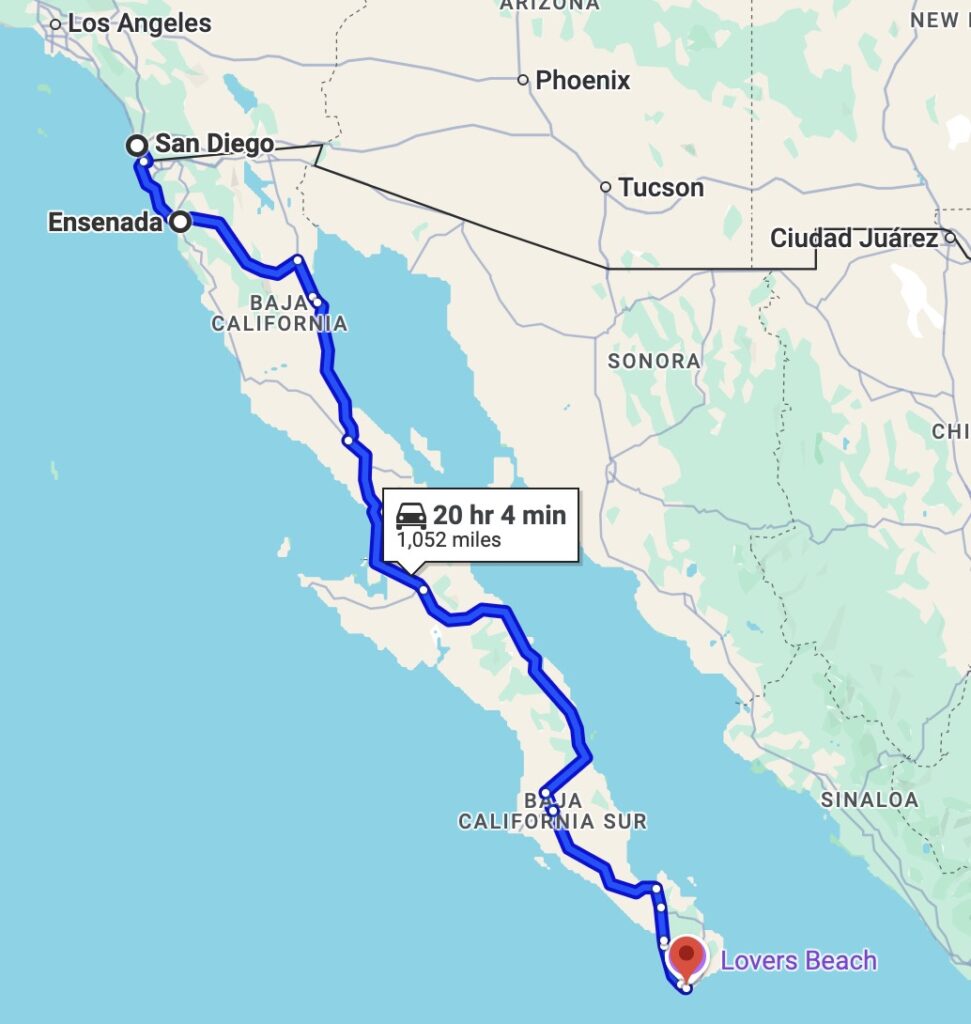
How long is the drive on the Baja Peninsula?
What is the speed limit in Baja California and Baja California Sur?
Open highways are 80-100km/hour (50-60mph) and will slow to 40-50km/hour (20-30mph) when the highway enters towns.
Based on Baja highway conditions, don’t expect to drive the speed limit. Give yourself extra time for your Baja road trip, including time for border crossings and military checkpoints.
Highway Conditions in Baja California and Baja California Sur
Even though these are two separate states North and South on the Baja peninsula, there doesn’t seem to be a noticeable difference in highway conditions. For your entire road trip, plan to expect:
- A two-lane highway
- Narrow lanes with no median
- Long stretches with no shoulder
- Semi-trucks (Transport trucks) driving full speed
- Speed Limits while driving in Baja
- Potholes and unmarked speedbumps
- Narrow winding roads, cliffs, and missing guard rails
- Random left-turn signals
- Animals crossing the highway
Before we dig into the details, yes, driving in Baja takes a lot of focus and minimal distraction. Two-lane highways with narrow lane, no shoulder and transport trucks with their tire over the line on a curve coming downhill oncoming are to be expected.
That’s not to scare you off from a Baja road trip or taking your RV to Baja, but it should serve as a warning not to plan on a top-down convertible, high-speed, radio-blaring road trip that you might imagine on the pacific highway in southern California.
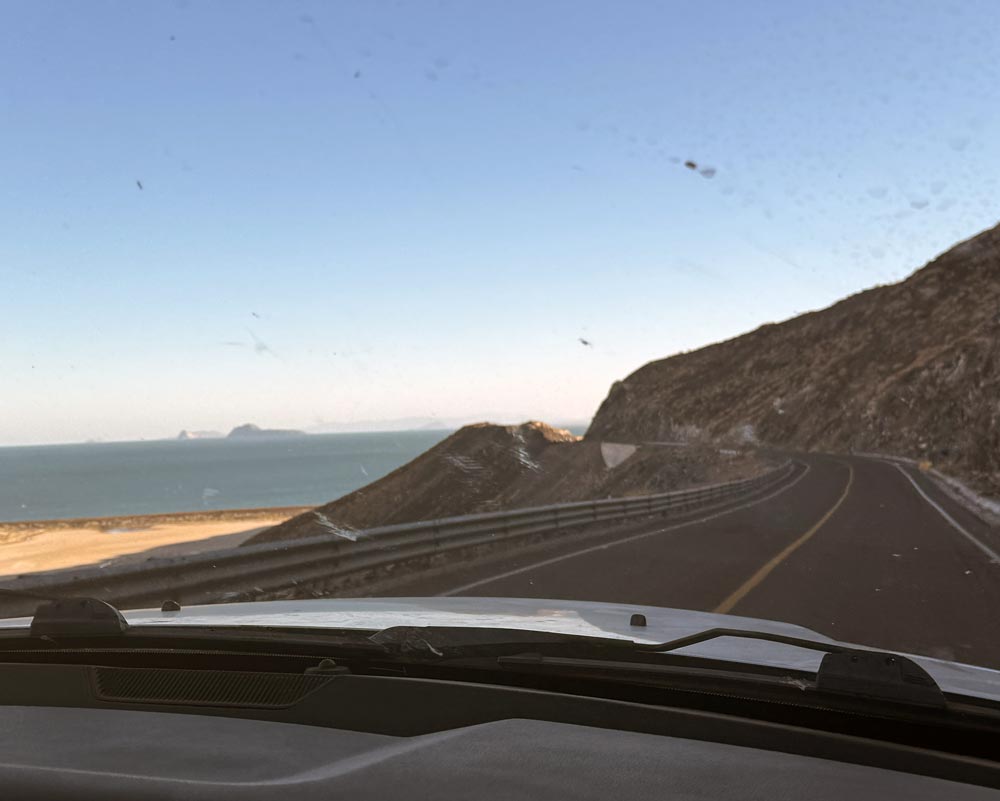
A rare portion of Baja highway with a shoulder
Narrow Winding Roads
If you see a transport truck coming down the hill around the curve in your direction, slow down and get as far over as safely possible without a shoulder. It would be better to be going slowly than have a gust of wind blow you a few inches towards each other – seriously, a few inches could put an end to your road trip.
We’ve passed by semi-trucks where in my side-view mirror, the distance between our trailer and their trailer is just the width of the dividing line on the highway. That being said, we don’t know anyone who has had an issue with their RVing on a Baja highway, but take it slow, and if you’re a nervous driver (or nervous passenger) be prepared ahead of time for what to expect.
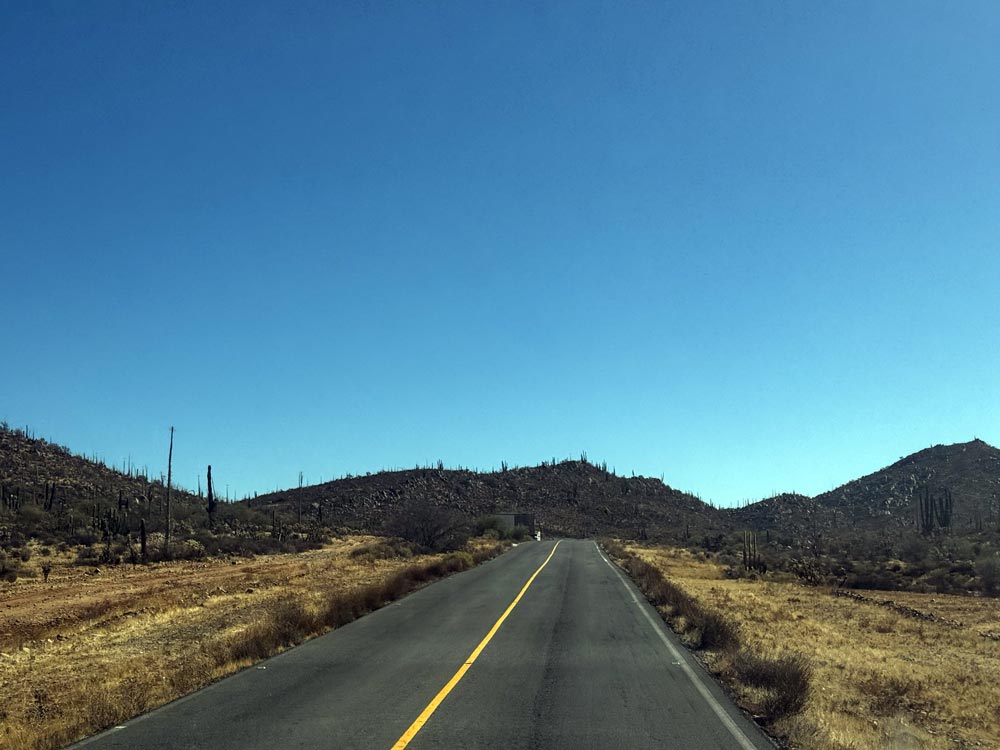
This section of highway has some pavement past the yellow line which is more than most of the rest of highway 1
Unmarked Speedbumps
Speedbumps will only be in town (not randomly on the highway), but since the main highway crosses many towns and villages, when you’re coming up on a town, watch for a speedbump. They’re sometimes marked by signs, sometimes painted yellow, and sometimes just a bit of shadow on the road that gives them away.
We’ve have noticed that an opportunistic mechanic almost always accompanies them. Our sons have a joke that a Baja speed bump isn’t actually a speed bump unless it’s right next to a mechanic ready to repair the vehicles of drivers who weren’t paying attention, so if you’re coming up to a vehicle and don’t see a speedbump marked, just slowdown when you see the mechanic’s garage.
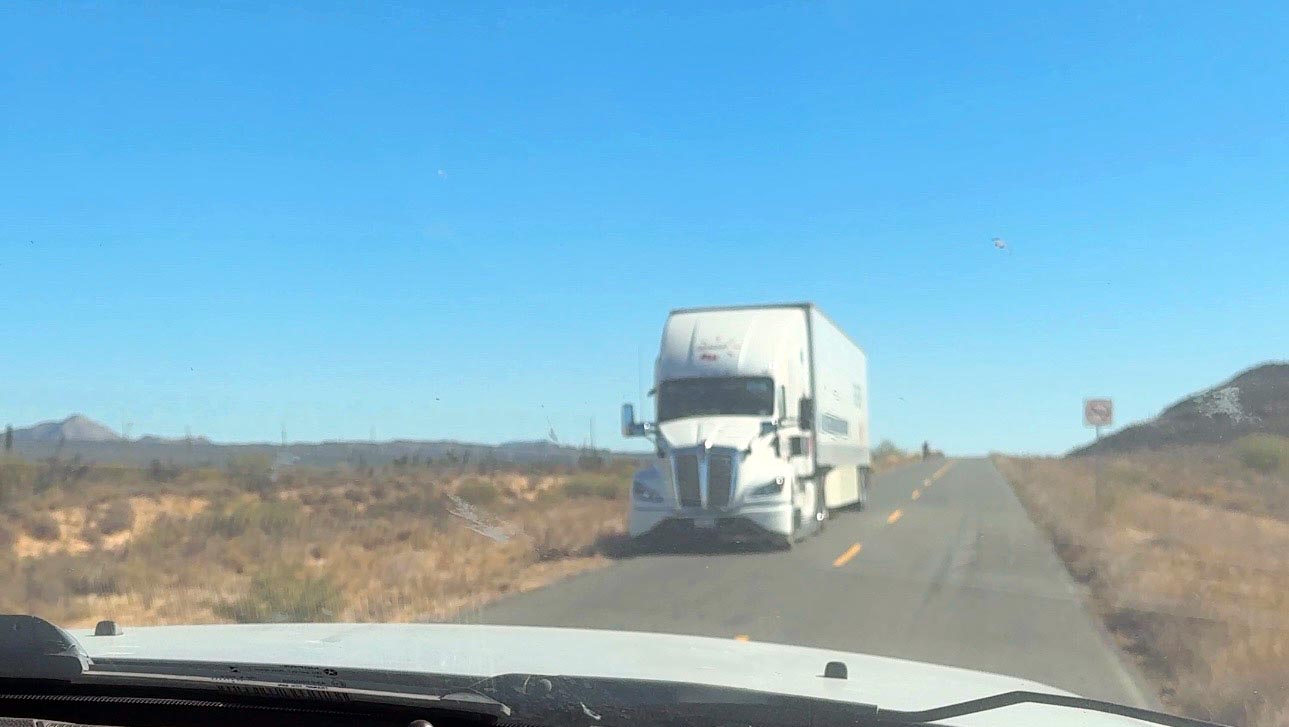
This semi-truck is “pulled over” by Baja standards since there’s no shoulder. You can see the driver in the distance running up the hill to find cell signal
Potholes while driving in Baja
Potholes are apparently getting better (according to friends who have been RVing in Mexico for many years) since the cities further away from the border crossing want to be sure tourists aren’t scared away from getting further south to the cities in Baja California Sur.
That being said, they haven’t solved the pothole problem, and while some sections of the highway have been patched up and others have been repaved, there are some sections that don’t seem like they’ve been touched since the original highway was put in.
We’ve found multiple stretches that are a pothole every few feet for a quarter mile. Some are just a few inches and can be driven over slowly, and others you’ll either need to come to a near crawl (like 3 or 4 feet in diameter) or as the Mexican drivers do, swerve into the oncoming lane to avoid the pothole altogether.
Of course, you never know when there may be a series of potholes around that next bend, and there’s often oncoming traffic in the other lane, so it takes some quick decision-making to avoid persistent potholes and typically traveling slower than the recommended speed limit “just in case.”
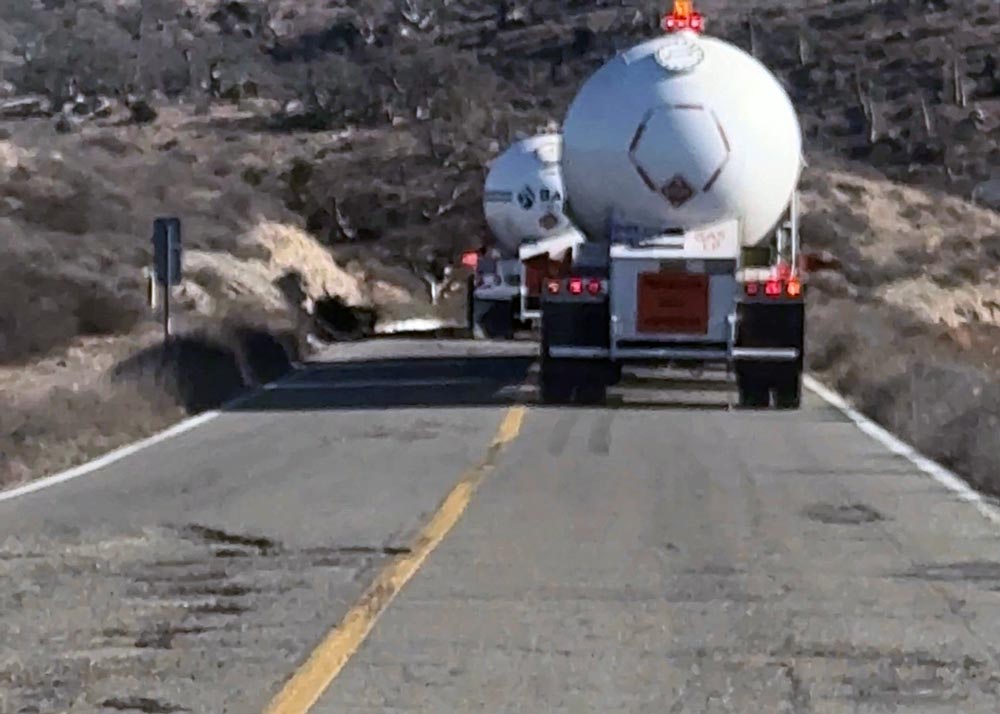
Check out the potholes in the oncoming lane on Highway 1. We were behind these tanker trucks who were taking it very slow
Left-Turn Signals
Since the highway is a two-lane highway, a slow truck in front of you may put on the left-turn signal while you’re driving in Baja. This is usually to indicate that it’s safe to safely pass them. We were initially concerned that it meant they were about to turn left, so we wouldn’t pass them if they intended to turn left in front of us.
It took us a bit to realize what that signal meant. A vehicle intending to turn left will move over into the oncoming lane to make that left turn, but be careful if you’re making a left-turn yourself off the highway that the person behind you doesn’t think it’s an indication to pass and come up on your left side.
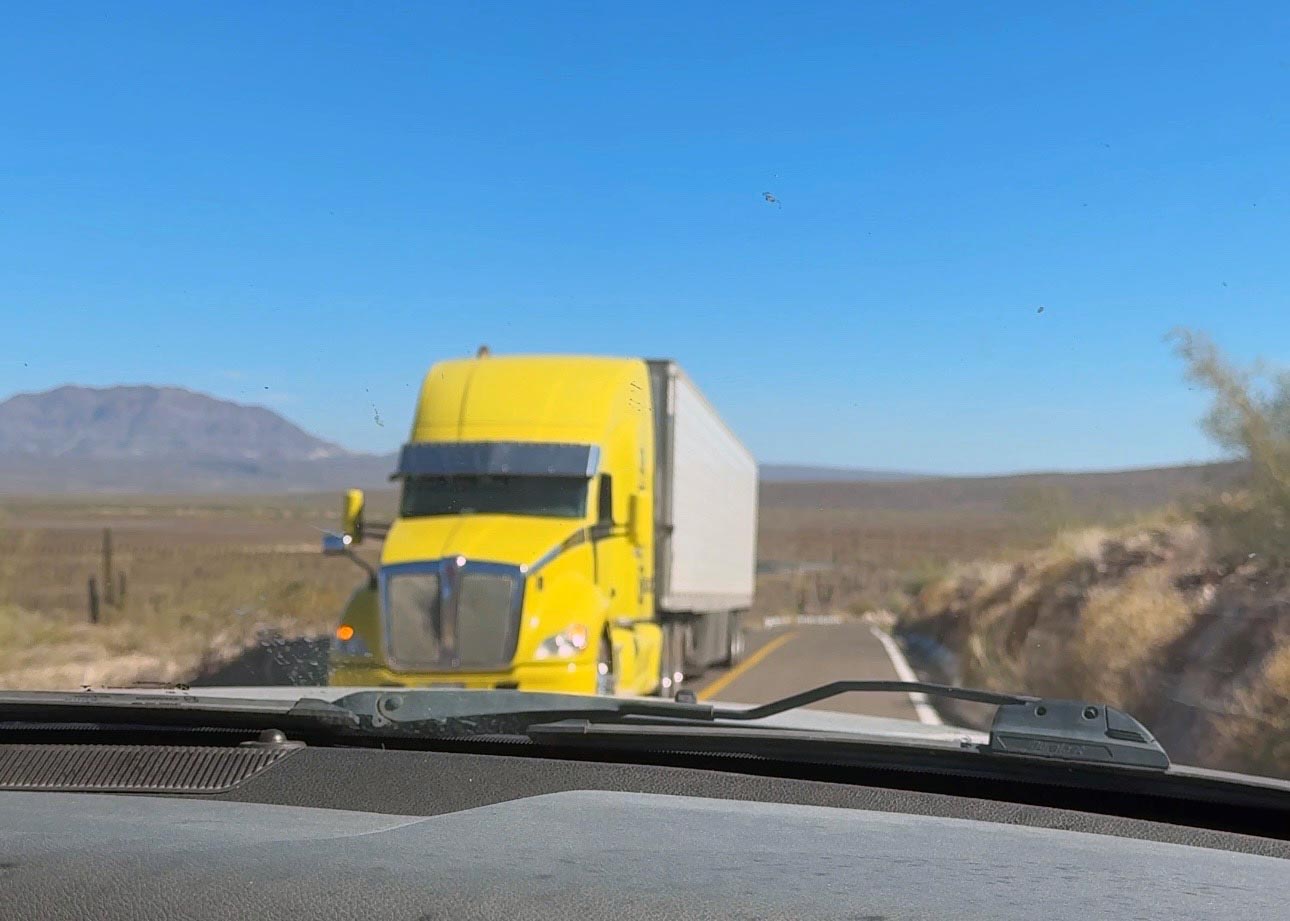
Highways are tight, so we slow down for oncoming traffic, especially large vehicles. One gust of wind at high speeds could create a collision. No shoulder for us and not much space on the other side of that yellow dividing line.
Animals crossing the highway
There are plenty of animals that roam free in Baja. On our most recent trip North-to-south in Baja California, we saw a transport truck blocking half of the highway just past a full-grown bull in the ditch, a dead goat, multiple buzzards, and some stray dogs.
We had to drive in the oncoming traffic lane to get past the truck since the highway is only 2 lanes except for some sections after you reach La Paz.

Highway 1 in Baja is being blocked by a transport truck
On a cool day or into the evening, animals will use the heat from the asphalt to keep warm.
I’m not intending to be graphic, but keep alert at all times which brings us to…
Is it safe to drive in Baja at Night?
Between potholes you can’t see coming, unmarked speedbumps as you’re entering towns, and animals that wander onto the warm pavement at night when the desert cools off, driving in Baja after dark is asking for trouble.
Your reaction time is limited to what you see in your headlights and most of the road isn’t lit unless you’re in a town, and even then, it’s inconsistent at best. Winding roads also are a challenge for how far ahead you can see up the highway.
Add on top that if you have trouble on the highway, there’s no shoulder, so you’ll be blocking a lane while you replace a tire from that series of potholes, and now you’re also running the risk that someone coming up behind you doesn’t see your vehicle blocking the lane until it’s too late.
We’ve stayed at beaches just off the highway (like Playa Santispac, for instance) and there seem to still be transport trucks that drive through at night, but that’s their route and they probably know all of the trouble spots.
Transports are welcome to use the highway, but we won’t drive at night in Baja.
(To be clear, we’re not talking about driving through town to go for dinner or groceries after dark, but we still do that with caution for speedbumps, dirt roads, missing street lights, and stray dogs that are common in Baja).

Bring some lighting for dark beach evenings in Baja
What to know about Gas Stations in Baja
Gas stations in both Baja California (the north half of the Peninsula) and Baja California Sur (the south half of the peninsula past Guerrero Negro) are all full-serve. You’re not allowed to pump your own gas so you have to wait for the gas station attendants.
Pull into a station and wait for an attendant to ask how much you’d like. “Lleno” (Yen-no) is the Spanish word for full, so “Lleno, por favor” is our typical response.
Ensure the attendant resets the pump to zero before they start pumping. It’s not unheard (meaning that it’s happened to us) of for the attendant to have a jerry can next to the pump where they pump a gallon or two before you pull in, then once you pull in start filling your tank from there, so you’ve paid for the extra gallon that they sell to a friend or take themselves.
If you notice they grab the handle and the display isn’t at zero, simply say “Cero, por favor”. They’re not looking for trouble, so they’re not going to argue. Many attendants will actually get your attention to show you it’s set to zero before they start pumping.
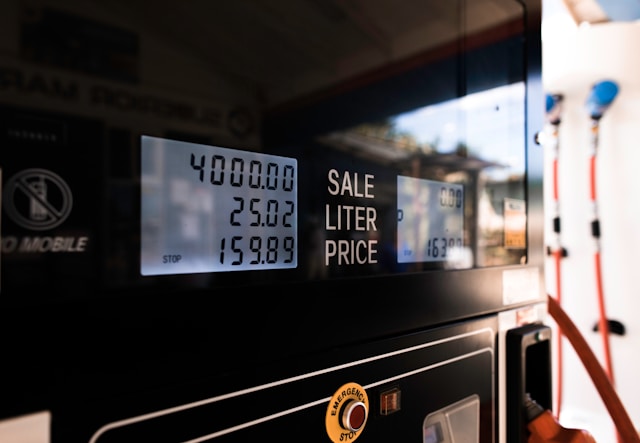
Gas in Baja looks a bit different between pricing in Pesos and measurements in liters
Tipping at gas stations in Baja
While your fuel is pumping, the attendant will usually ask if you’d like your window washed. If you say yes, they’re expecting a tip. We usually give $20 pesos (about $1) for a fill-up as a cash tip or $50-$100 pesos ($2.50-$5) for a tip if they wash the windows.
We especially tip well if we’ll be in an area and visiting that same gas station multiple times during our visit, so as soon as they see us pull in, they run over to start pumping our fuel, knowing we tip well.
We’re not sure that locals tip often, but it is expected from visitors. Be sure to have some cash on hand for your Baja road trip.
Is it easy to get Diesel in Baja, Mexico?
In our experience, about 50% of gas stations in towns have diesel, and almost every station along the highway has diesel, but there’s no guarantee that they have inventory or how far the next station is, so we make gas station stops when we’re at half a tank.
We got to almost empty one time in Guerrero Negro and the only gas station that carried diesel was out. We were able to make it to the next gas station (while towing our trailer) with 23 miles to spare – a little too close for comfort.
DEF fluid is also not always accessible, so take a few jugs on your road trip if your vehicle requires it. It’s not considered “fuel’ at the border crossing, so we take a few jugs and restock when we see it.
Mexican Auto Insurance
When you’re crossing the border, you might need to show your Mexican Tourist Auto Insurance Certificate. Having Mexican insurance specifically for driving in Mexico is essential for a tourist. A quick call to your auto insurance company can help you verify your coverage. However, several Mexican auto insurance agencies near the border indicate that most people must add a Mexican auto insurance policy to their current vehicle insurance which will include Mexican Liability Insurance.
If you’re hoping to rent a car for your Baja road trip (fly into San Diego or Phoenix and rent a car for instance) you’ll want to check for current details on if you need your own car for border crossings or if a rental is acceptable, both from the car rental company and as far as Mexican liability insurance.
We’ve opted for Lewis and Lewis for our trips (https://mexicanautoinsurance.com/), but a quick Google search will give you plenty of other options to get quotes online.
If you get into an accident in Mexico, the police may take both parties to the station and will release you once they confirm you’ve got the right insurance to cover any damages. If you don’t have it, you’ll be released once the financial matters are sorted. While we don’t personally know anyone who’s gone through this, it’s definitely not worth the risk of going without proper coverage.
Pro tip: You might be able to pause or cut back on your regular auto insurance while you’re in Mexico using your supplementary tourist auto insurance to help balance the cost.
Military Checkpoints in Baja
Along the highways, you’ll come up to military checkpoints. Some will waive you past and some will ask you to stop. These military members will always be in uniform and there is no toll at these checkpoints.
If they ask you to stop, they’re going to ask where you’re coming from and where you’re going to. We always give them the name of the last town we stayed in and the name of the next town we’re going to.
They also confirm we’re here on vacation, so we say yes.
As I pull up, I roll down both my window and the back window of our truck so they can see our boys. Sometimes they look in our trailer, but not always. These military checkpoints are not international border crossings, so they aren’t concerned with fresh fruit or meats.
You’ll see a sign that will indicate you need to slow down for an upcoming check point. There’s a checkpoint at the state crossing North-to-South from Baja California in the North to Baja California Sur in the South, and 8 or 10 military crossings along the peninsula at seemingly random points between the US and the southern tip of the Baja peninsula.
Cell Service on your Baja Roadtrip
In our experience, about 2/3rds of the highway has no cell phone service. Service is mostly available when you get to a city and maybe if you can find wifi at a restaurant or gas station.
We travel with our Starlink in our RV, so we can always pull over and get signal if needed, but since the routes are limited, know your next stop and stick to the highway until you get there.
Differences between Baja California and Baja California Sur
The Baja peninsula is made up of two states. Baja California (aka Baja California Norte) borders the US, and Baja California Sur is the southern half of the peninsula. A Baja California road trip from California or Arizona can give you a great sense of being in Mexico, but it’s not the same as a road tripping to the southern tip of Baja.
In the North (Baja California), you’ll be able to experience:
- Beach Cities like San Felipe, Ensenada, Tijuana
- Hot springs in Puertocitos
- Beach camping in La Poma, Bahai De Los Angeles
- Along with hikes, scenery (like Valley of Giants – home to some of the largest Saguaros in the world), and small-town restaurants and shops

Baja California is the Nothern state on the Baja Peninsula
In the South (Baja California Sur – or “Sur” as it gets nicknamed), you’ll find:
- Beach cities like Santa Rosalita, Loreto, Todos Santos, La Paz, La Ventana, Lor Barilles, Guerrero Negro (Famous for gray whale spotting in the spring on the west coast), and Los Cabos (plural for “the Cabos” meaning the two cities of Cabo San Lucas and San Jose Del Cabo)
- Remote hikes to waterfalls and hot springs
- Beach spots for camping like Playa Santispac and Requeson outside of Mulege, and Tecolote outside of La Paz, and remote beach camping near the airport on Loreto

Baja California Sur is the southern state on the Baja Peninsula
It’s worth noting that you’ll need to know a bit of Spanish to RV in Baja. You don’t have to be fluent, but here are some Spanish you should know when RVing in Baja.
Time Zones in Baja California and Baja California Sur
Even though timezones typically change East-to-West, the north-to-south state crossing has a time zone change with Baja California in the North matching California’s Pacific Time Zone, and Baja California Sur in the south matches Phoenix, AZ and does not change for Daylight savings.
Baja Roadtrip Checklist
If you’re Baja bound, be sure you’ve got everything you need for your road trip.
- Vehicle registration (including your RV)
- Proof of Mexican liability insurance and auto insurance
- A spare tire and jack
- Supplies you might want to Baja Camping (tent, cooking utensils, beach chairs, etc)
- Download navigation apps and offline maps like Google Maps, Apple Maps, and apps for finding camping locations like iOverlander
- Google Translate app
- Car snacks and water (probably goes without saying for anyone with road trip experience, but keep in mind that it only takes a small incident to impede a 2-lane highway, and you may be sitting there for hours until a tow truck arrives from the nearest city north or south to remove a vehicle.)
- Pesos – while most gas stations and grocery chains take card, it’s not unusual for them to have an internet outage or be one of the few that is cash only. We try and pay by card as much as possible, but we always have about $500 USD worth of Pesos (about $10,000 Pesos/month) on hand for emergencies, fruit stands, or local restaurants and souvenirs.
If you’re taking your RV to Baja, here’s our recommended packing list for a family RV vacation in Baja. Mexico




